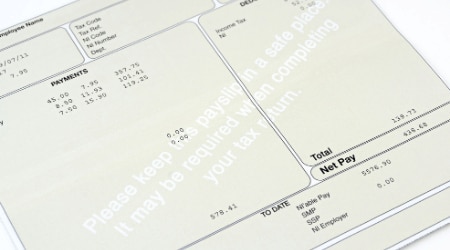Should I Pay Myself a Salary?
The profits of your small business are a direct result of your dedication to bringing it to fruition. As a business owner, this is an exciting experience, yet, the dilemma lies in determining your own salary.
There are a few things to keep in mind when you're making this decision:
Business Structure
The structure of your business is one of the main factors that will help in determining your payroll process, and will indicate what payment style is relevant for your business.
The owners of sole proprietorships, partnerships, and LLCs are considered self-employed, meaning they pay themselves through the owner’s draw for personal expenses rather than regular wages. However, you'll need to pay yourself a salary if you own a corporation and are engaged in its day to day operations.
Payment Method
There two ways in which you can pay yourself:
1. Owner’s Draw
The owner’s draw is the distribution of funds from your equity account. This leads to a reduction in your total share in the business, and you cannot deduct the owner’s draw as a business expense, unlike a salary.
So, if you are a sole proprietor, a partner, or an LLC, you can go for the owner’s draw.
It is important to note that the owner’s draw is not taxed when it is taken out of business. However, you need to pay taxes on such draws while filing personal tax returns.
2. Salary
Salary refers to a fixed amount of regular payment paid every month, which state and Federal governments will tax.
You'll need to pay yourself a salary, and not an owner’s draw, if you own a corporation and are engaged in its day-to-day operations.
Amount of Payment
The next step, after you have determined the appropriate payment method, is to calculate the amount you'll need to pay yourself. Generally, this pay will be an amount that a similar business would pay for the same or similar set of services.
You can consider the following factors to know whether the pay is reasonable or not:
- duties performed
- business complexity
- cost of living
- volume of business
- time invested
To determine how much you should pay yourself, you'll also need to go through your P&L and determine the profits your business is generating. Then, deduct your payment from the profits earned once all the business expenses, like rent, salaries or business supplies, have been deducted.
Schedule of Payment
You'll also need to think about your payroll schedule, especially if you are the only one running the business.
There are various ways in which you can pay yourself, including weekly, biweekly, semi-monthly and monthly.
Every state has its payroll schedule, so you'll need to check with the department of labour as to under what payroll schedule falls.
Get Paid
Once you have decided your payroll schedule, you can then pay yourself by either writing a check and depositing the same into your bank account, or by transferring funds directly into your bank account.















